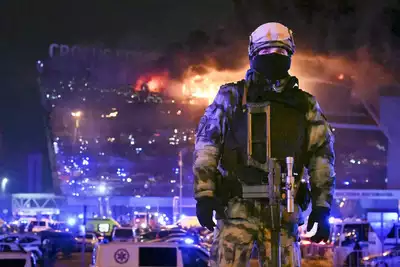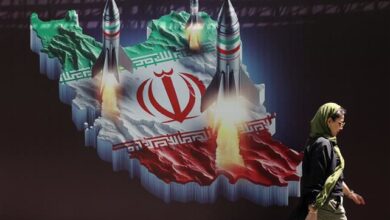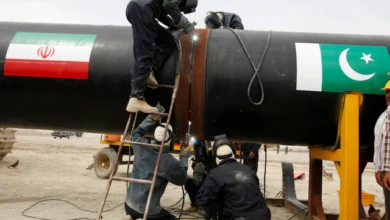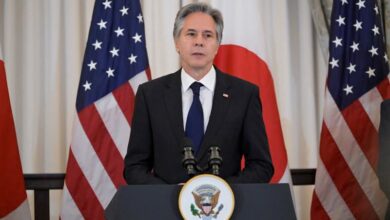Isis-K is at war with the world, as the Moscow atrocity demonstrated. Will the US be the next?
The susceptibility of the Russian capital to the danger presented by the Islamic State group and its branch, Isis-K, has been brutally highlighted after a devastating assault on March 22, 2024, in Moscow. But this episode not only demonstrated Moscow’s vulnerability but also begged the important question:

Could a US city be the next to fall victim?
The overall image
Islamic State Khorasan Province (Isis-K) has become a powerful force after the collapse of its parent organisation in Syria, demonstrating that the Islamic State’s loss of territory does not mean the end of its aspirations to conquer the world.
The simultaneous assault in Kandahar and the Moscow event on the same day demonstrates a concerted attempt to project strength and engender terror well beyond the group’s local bastion.
Zoom in Isis-K has a multipronged strategy that includes recruiting and resource acquisition in addition to using high-profile assaults to establish control over other jihadist organisations.
Isis-K aims to establish its dominance over other organisations and weaken their influence in the jihadist realm of the Khorasan area, which includes Afghanistan, Pakistan, Iran, and other Central Asian countries, by making a distinctive identity on the crowded extremist battlefield.
The organisation has taken a calculated strategy to challenge international security measures and grow its power, as seen by its recent activities in Iran and foiled schemes around Europe.
According to a Reuters report, Isis-K Sanaullah Ghafari, who is 29 years old, has led the Islamic State’s Afghan division through a dramatic transformation, making it a stronghold within the global Islamist network that can carry out operations far beyond its bases in Afghanistan.
Two spies from the Afghan and Pakistani Taliban told Reuters that Ghafari went to Pakistan with his injuries, taking sanctuary in the volatile border state of Balochistan, despite rumours that he had died in Afghanistan in June of last year. On Ghafari’s present whereabouts, the Pakistani Foreign Ministry has not yet provided an explanation.
Ghafari, who was chosen to command Isis-K in 2020, has enhanced the group’s reputation for carrying out high-profile assaults and adhering to a strict creed. The suicide attack at Kabul’s international airport in 2021 during the US military’s withdrawal brought Isis-K to the attention of the world, killing 13 US troops and many civilians. Furthermore, the organisation declared themselves accountable for a deadly suicide attack on the Russian embassy in Kabul in September 2022.
In an announcement of a reward for information, the US State Department identified Ghafari by his combat alias, Shahab al-Muhajir, emphasising his function as an experienced military leader in charge of planning Isis-K suicide strikes in Kabul.
After leaving Iraq, a number of foreign terrorists joined Isis-K in the Afghanistan-Pakistan area. Their guerrilla warfare experience helped the organisation launch strikes in Iran, Turkey, and Afghanistan. This information was provided by a senior Iraqi security officer who wished to remain anonymous.
In between the words: US in the crosshairs
With the US pulling out of Afghanistan, Isis-K now has an edge both strategically and tactically.
Isis-K capitalises on current geopolitical tensions and historical grievances to foster a larger anti-Western feeling by portraying the US as its main foe.
Both the 2015 mass shooting in San Bernardino, California, which left fourteen people dead, and the 2016 Orlando, Florida, nightclub massacre, which left at least forty-nine people dead, were inspired by the Islamic State organisation.
What comes next?
The strike in the vicinity of Moscow is a clear illustration of Isis-K’s objectives and potential. In order to prevent and destroy Isis-K’s networks, the US and its allies must adopt a watchful and diverse counterterrorism strategy that incorporates military precision, information collection, and community involvement. Given the group’s flexibility and the ideological appeal it retains among certain people, the endeavour is challenging.
It’s critical to understand the fundamental motives and tactics that drive Isis-K’s operations as it continues to attack major states. Given the group’s propensity to take advantage of societal unrest and geopolitical rifts, a strictly military approach may not be enough. In order to limit Isis-K’s reach and stop other assaults, a comprehensive approach that tackles the underlying causes of radicalization and promotes regional collaboration is essential.
Sara Harmouch, a PhD candidate at American University, claims that the US has adopted a comprehensive strategy that combines military operations, information gathering, and law enforcement measures to combat the growing threat posed by affiliates of the Islamic State group.
However, US citizens are still at risk of being terrorised by ISIS affiliates. “The incident in Moscow highlights Isis-K’s determination to increase its power and raises questions about the possible danger to Western countries, particularly the US. It would be naïve to rule out the potential of an assault on American territory given Isis-K’s history and stated goals, according to American University’s Sara Harmouch.







